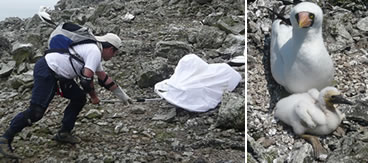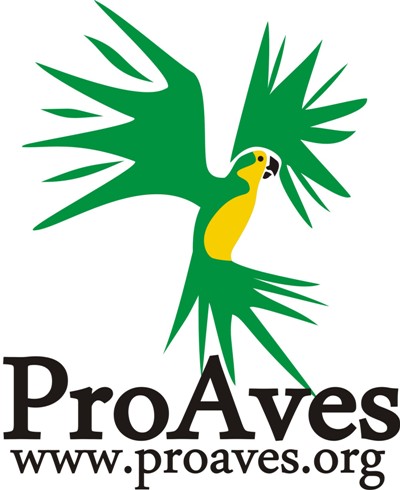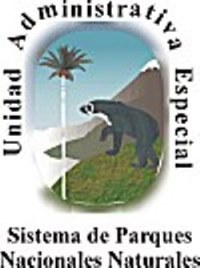Tuesday 30 March 2010.
Framed within the scientific research cruise SEASCAPE and as part of the monitoring program established for bird species on the island, the 13th expedition to the wildlife Sanctuary of Isla Malpelo was made by the ornithologist and Executive Director of Foundation ProAves, David Caro.
During the expeditions, ProAves has banded a total of 1500 individuals of the Nazca Booby (Sula granti); in this expedition 300 individuals were banded with all individuals being adults. The data collected during the expedition will continue to consolidate information towards the elucidation of population structure, dispersal, moult patterns, reproduction and behaviour of this population. Information was also obtained about the composition of the avifauna of the island.
 |
The Wildlife Sanctuary of Isla Malpelo has the largest breeding colony of Nazca Booby in the world, with 26,000 individuals (Pitman et al. 1995). The main objectives set by the scientific expeditions and days of monitoring through the ringing of the Nazca Booby (Sula granti) in the Malpelo Island are the elucidation of natural patterns of moult, behaviour and reproduction of this species so that efficient parameters to preserve them in Colombia and the world can be ensured.
During the investigation 18 species belonging to 11 bird families were recorded, of which 4 species are boreal migratory. Some of these species were recorded at sea en route between Buenaventura and the island.
 |
As a particular observation and important recording, 3 individuals were recognized as juvenile Snail Kite (Rostrhamus sociabilis), according to the literature and reports from the island such a kind has not been recorded for the island, the observations were made in the upper northern part of the island, on the way to the lighthouse.
See video:
{youtube}72ExPjKTnG0|425|344|1{/youtube}
Likewise, during this time of year the colony is in its breeding season, for this reason hatching eggs were observed, adults brooding and keeping chicks warm and a large number of pairs making nests ready; this behaviour is characterized primarily by offering the mate objects to build the nest, among the items offered are stones, feathers, glass and others.
See video:
{youtube}xe-jRz-TKyQ|425|344|1{/youtube}
Special thanks to the Marines for their support on the day of investigation.
With the support of:
 |
 |
 |
